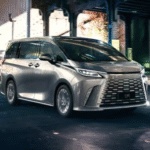Hybrid cars are a smart investment, blending fuel efficiency with reduced emissions and innovative technology. But to keep your hybrid running smoothly for years, proper care and maintenance are essential. Whether you’re driving a Toyota Prius, Honda Insight, or a plug-in hybrid SUV, here’s how to ensure long-term reliability and performance.
1. Stick to the Manufacturer’s Maintenance Schedule
Your hybrid comes with a tailored maintenance schedule. This guide includes critical intervals for oil changes, fluid top-ups, and inspections of the hybrid system. Following this schedule isn’t just a suggestion — it’s the best way to extend the life of your vehicle.
Pro Tip: Don’t wait for dashboard warnings. Preventive maintenance saves money in the long run.
2. Don’t Neglect the Engine
Although hybrid engines don’t run all the time, they still need regular maintenance. Use high-quality, manufacturer-recommended motor oil and change it as specified — usually based on time or mileage, whichever comes first.
3. Care for the Hybrid Battery
The hybrid battery is the heart of your car’s efficiency. While it’s designed to last for many years, proper habits can stretch its lifespan even further:
- Avoid long periods of inactivity
- Park in shaded or cool areas
- Don’t let the battery fully drain
- Drive regularly to keep it in active use
Some hybrid models have battery cooling fans — make sure the vents around them stay clean and unobstructed.
4. Maintain Cooling Systems
Hybrid vehicles often have more than one cooling system — for the engine, battery, and inverter. Regularly check coolant levels and flush the systems according to your car’s maintenance guide.
Check the hybrid system cooling reservoir if your car has one.
5. Pay Attention to the Brakes
Hybrids use regenerative braking, which reduces brake wear significantly. But that doesn’t mean you can ignore them:
- Inspect brake pads periodically
- Change brake fluid every 2–3 years
- Keep an eye on braking performance and noise
6. Change Transmission and Inverter Fluids
Hybrid transmissions are different from traditional gearboxes. Some use a continuously variable transmission (CVT) or an e-CVT, which need specific fluid changes. Likewise, the power inverter (which helps manage battery current) may require periodic coolant or fluid servicing.
7. Drive Smart
Your driving habits impact your hybrid’s health more than you think:
- Accelerate smoothly and avoid sudden stops
- Coast when possible to maximize regenerative braking
- Avoid high speeds and aggressive driving
These behaviors reduce wear and improve overall fuel economy.
8. Keep Your Hybrid Clean
It’s not just about looking good. Keeping your car clean — especially under the hood and around cooling vents — helps maintain airflow and reduce dust buildup around sensitive electrical components.
9. Monitor Dash Warnings and Run Diagnostics
Modern hybrids come with sophisticated warning systems. If a warning light appears, don’t ignore it — hybrid systems can be expensive to repair if issues go undiagnosed.
Schedule periodic diagnostic scans with a mechanic familiar with hybrid systems.
10. Keep Detailed Service Records
Hybrid vehicles retain their value better when you can show a full maintenance history. If your vehicle is under warranty, these records also support any potential claims.
Final Thoughts
Maintaining a hybrid car isn’t much harder than caring for a regular vehicle — but it does require attention to a few extra systems. By being proactive, driving wisely, and staying on top of maintenance, you’ll ensure your hybrid delivers dependable performance and fuel savings for years to come.




Solid article! Understanding variance is key to long-term poker success. Seeing platforms like jlboss login offer diverse games shows they get entertainment value-managing risk applies to both cards and fun! Good read.
Interesting analysis! Seeing more platforms like JKbose emerge is changing the virtual sports landscape. User experience seems key – quick verification & diverse games are a winning combo for engagement! 🤔